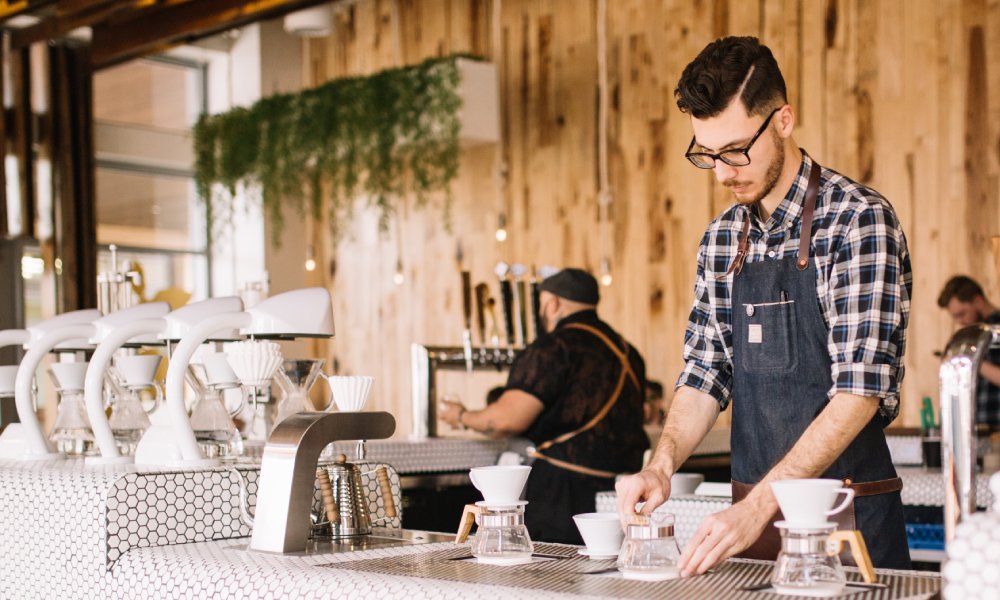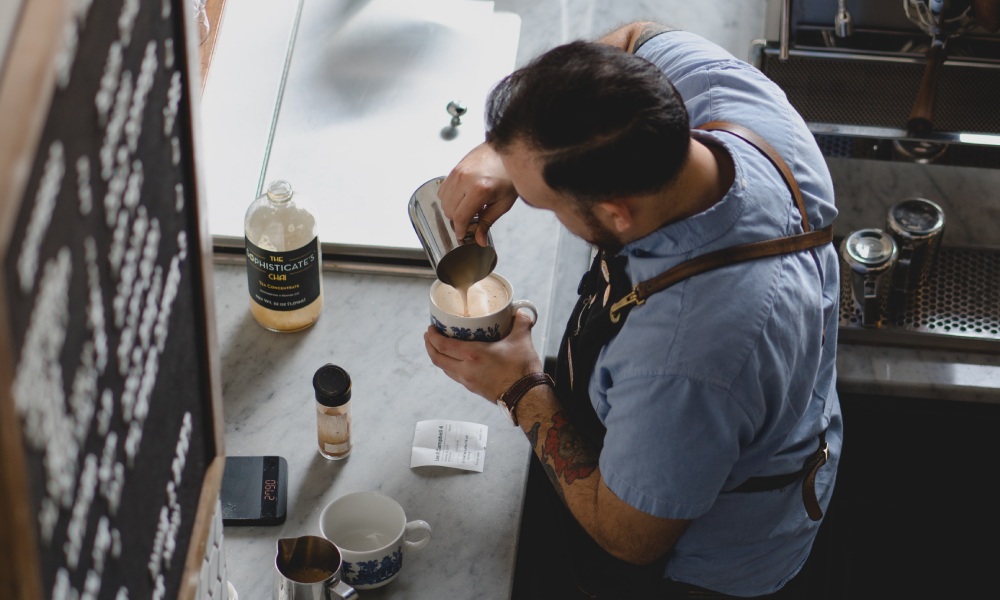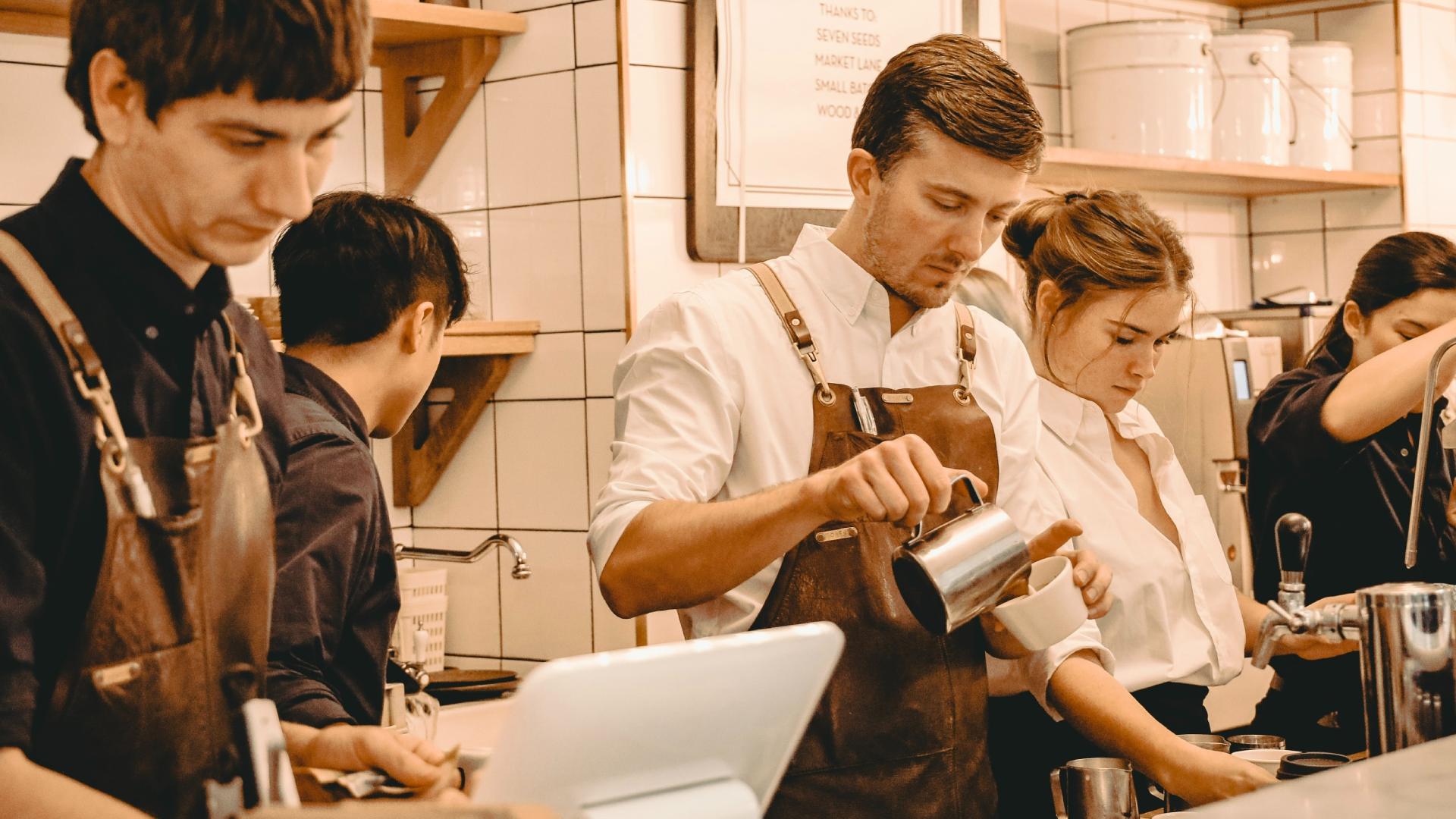How to maximise barista workflow for a better customer experience
The owner of Precision Pour, Brice Young, chats with Tanya Nanetti about the concept of barista workflow and its role in keeping cafés organised and efficient.
From dialling in to cleaning up, a barista’s workflow is not only the key to the successful running of a café, but also the job satisfaction of the baristas themselves.
Defined as the sequence of steps involved in moving from the beginning to the end of a working process, workflow – when implemented correctly – can reduce waiting times, raise productivity, and even create a safer working environment.
“Barista workflow is similar to that of the modern assembly line,” explains Brice Young, the owner of Precision Pours, a roastery and bakery in Colorado, US. “Each position on the bar allows the next to succeed, while the checks and balances are maintained by well-trained staff.”
The purpose of an effective barista workflow is to prepare coffees quickly, efficiently, and consistently. However, achieving a perfect workflow is far from simple. It requires a long-term strategy, which takes into account every aspect of the coffee shop, including the staff and profile of the customers.
Ideally, the plan toward a perfect workflow should begin before the business even opens as it needs to take into account the space available.
In a small neighbourhood café, for example, where only one person may be behind the bar, it’s essential that the till, the coffee machine, and the pastry display are all within a short distance to minimise moving time between each one. A large coffee shop, on the other hand, will need to consider how staff can effectively move around without bumping into each other or making another member of staff wait.

Why is barista workflow so important?
Coffee shops with a well-established barista workflow are easy to spot. From the moment you step in, they offer a seamless experience, where one step follows the next in a smooth, graceful, and fluid manner.
This is important for several reasons, particularly for waiting times. According to research by Adrian Furnham, Professor of Psychology at University College London, the average customer is prepared to wait in line for 5 minutes 54 seconds before they think about leaving. After five minutes the customer’s satisfaction can fall from 95% to 85%.
In an organised café where everything runs smoothly, there will also be no significant queues, regardless of the number of customers.
Instead, the customer will place an order at the cashier, the barista (or baristas) will promptly execute the requested coffee, and – without showing signs of being rushed – the barista will also have time for a conversation with the customer. This is the type of engagement that can leave a customer satisfied and eager to return.
Barista workflow can heavily influence the ambience of a coffee shop, which also has an impact on customer satisfaction. A recent survey of 191 people across eight different coffee shops found that nearly a third had chosen to visit that particular location because of the atmosphere.
A coffee shop in which staff seem hurried, forget orders, or raise their voices is rarely conducive to a positive atmosphere that enables the customer to feel relaxed. According to Brice, this can have dramatic knock-on effects for the coffee shop.
“Without a proper understanding of our customers and community, we will fail in business,” he explains. ”If the customer perceives their experience as poor or has an issue with the staff, it can ultimately lose us a sale and a word of mouth referral, which is more powerful than any ad.”

How can cafés maximise barista workflow?
Because each café is different from the next, there’s no one-size-fits-all strategy that can help maximise barista workflow. However, there are a few rules of thumb that can help any business succeed – starting with the perfect café design.
Brice says that the flow in and out of a space is just as important as the layout of utilities in a floor plan. For instance, both staff and customers need to be visible from all angles. He adds that lines of sight in particular enable baristas to direct traffic and deliver quality.
“The procession and lines of sight are probably the most important aspects of a well-designed coffee bar,” he explains. “It’s not necessarily all about the finishes you put into a building, but how one interacts with the space and with the other people in that space. If we can see and interact with the people, we will do better in the industry.”
Choosing the right equipment can also make all the difference.
From a traditional single-group volumetric espresso machine and classic grinder for a small specialty coffee shop to a superautomatic espresso machine, professional grinder, and automatic tamper for a busy chain coffee shop, baristas need the right equipment to get the job done.
In a small coffee shop, the classic setup allows the lone barista to brew coffee manually, showcasing their skills and training. Conversely, in a high-volume chain, a superautomatic will help free up time for the barista, giving staff more time to engage with customers and complete other tasks, such as steaming milk.
Heylo Coffee’s modular system, for example, can significantly improve workflow in high-volume cafés. With the ability to operate as a double-head workstation, it can help distribute the brewing process and ensure the barista’s experience is built in such a way that matches the café’s overall setup. Meanwhile, its milk module automatically steams milk to ensure perfect consistency and stability, helping to further reduce the time between ordering and serving.
But it’s not just physical aspects that can improve workflow. The better trained the staff, the better the quality of both the coffee and the service. Well-trained and experienced coffee professionals, who know their way around each piece of equipment, will be far more conducive to a positive customer experience than those who are expected to learn on the job.
“Like a well-oiled machine, a successful barista – along with the rest of the team – is an integral part of the shop’s purpose and function,” Brice concludes.
From the cashier to the runner to the head barista, every team member should be properly trained: a perfect knowledge of the menu, the workspace, and the equipment will ensure that workflow is efficient and optimised.








